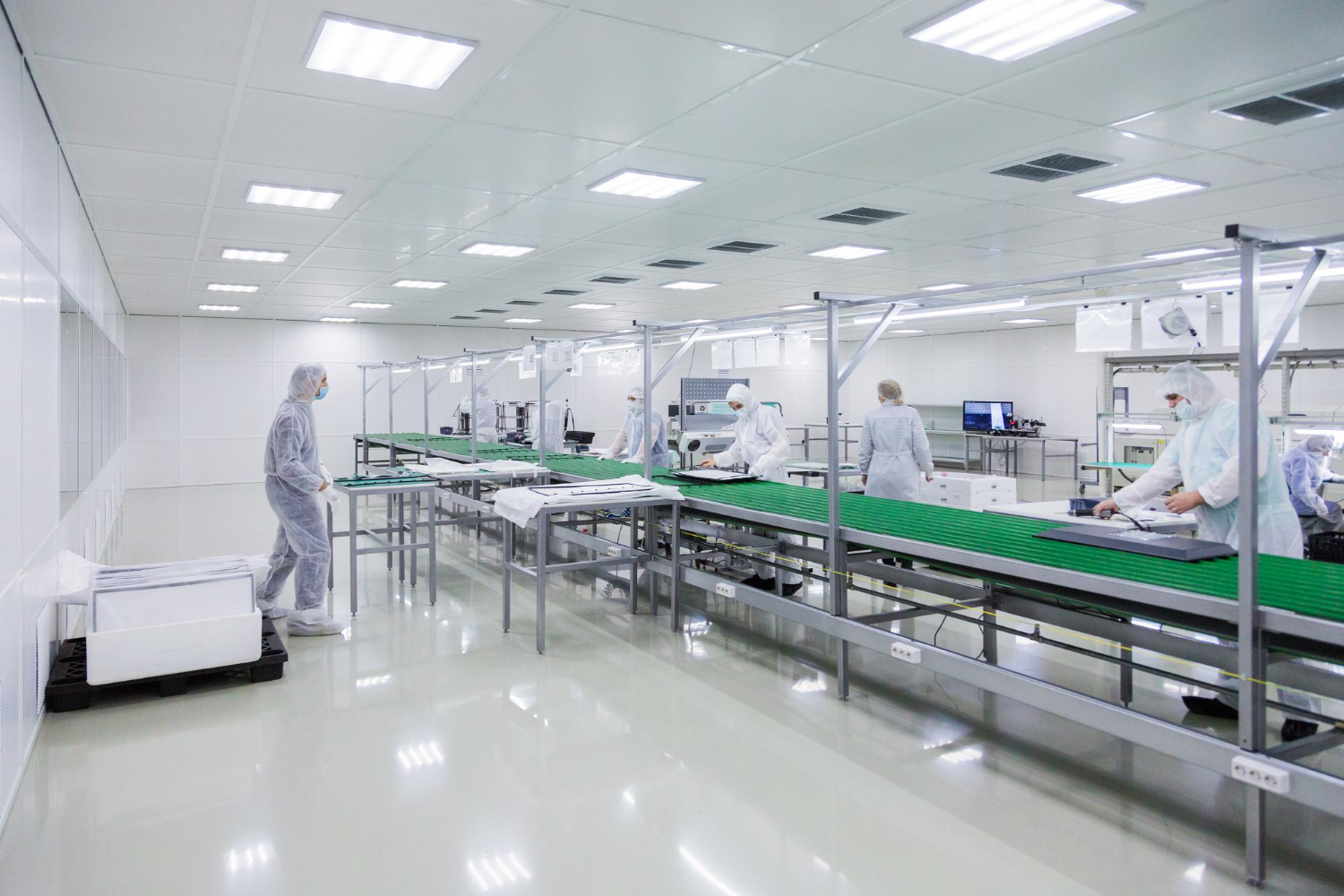
Clean rooms help protect important work from dust, germs, and small particles. These rooms remain clean by using special air systems and protocols. Clean rooms are specialised spaces designed to reduce airborne particles, microbial presence, and other forms of contamination that could disrupt processes or compromise quality. These clean rooms matter a lot in places like medicine, electronics, and labs. Ensuring product safety and helping workers perform their jobs effectively.
To keep clean rooms working right, people follow ISO clean room standards. These rules explain how clean a room should be and how to test it. This blog will guide you through everything from how clean rooms work to how to choose the right one.
What is a Cleanroom?
A cleanroom is a special place designed to prevent dust and tiny particles from entering. These rooms protect tools and products that must stay clean during work. Cleanrooms do more than just block dirt; they also control temperature, air, and who can come in or out.
Before diving into ISO clean room standards, understand what makes these rooms special:
- Filters clean the air. Therefore, HEPA and ULPA filters trap tiny particles floating in the air.
- Air, temperature, and pressure stay steady. The room controls these things all the time.
- People follow strict access rules. Only trained workers can enter, and they must wear special clothes.
These parts work together to keep the room clean and ready for important tasks.
Why Clean Room Standards Matter
Cleanroom standards help workers maintain a clean and safe environment. These guidelines demonstrate how to prevent mistakes and ensure air purity. If a cleanroom fails to function properly, it could damage products or waste materials. By adhering to cleanroom standards, workers protect their tasks and comply with regulations that inspectors enforce. These rules don’t just benefit one team they strengthen the entire system’s safety and reliability.
In industries like pharmaceuticals or semiconductor manufacturing, cleanrooms must meet specific cleanliness levels. The standards also provide clear procedures for daily maintenance of the space.
Overview of ISO Clean Room Standards
The International Organisation for Standardisation (ISO) established a set of protocols to help workers set up clean rooms. These ISO clean room standards provide clear guidelines for correctly building, inspecting, and maintaining clean rooms.
Here are three key aspects covered by ISO cleanroom standards:
- ISO 14644-1 specifies the permissible number of tiny particles in the air.
- ISO 14644-2 to 5 outlines procedures for monitoring, testing, and operating the room.
- Performance testing evaluates airflow, pressure, and filter efficiency.
These standards ensure that clean rooms remain safe, function effectively, and comply with inspection requirements.
Clean Room Classification Explained
Clean room classification indicates how many tiny particles are allowed in the air. Rooms with fewer particles have lower classification numbers. Therefore, ISO Class 1 is the cleanest, while ISO Class 9 permits more particles.
ISO Clean Room Classifications
| ISO Class | Particles ≥0.5 µm/m³ | Air Changes/Hour | Ceiling Coverage |
|---|---|---|---|
| ISO 1 | 10 | 360–600 | 90–100% |
| ISO 2 | 100 | 360–600 | 80–100% |
| ISO 3 | 1,000 | 360–540 | 60–100% |
| ISO 4 | 10,000 | 300–540 | 50–90% |
| ISO 5 | 100,000 | 240–480 | 35–70% |
| ISO 6 | 1,000,000 | 150–240 | 25–40% |
| ISO 7 | 352,000 | 60–90 | 15–20% |
| ISO 8 | 3,520,000 | 5–48 | 5–15% |
| ISO 9 | 35,200,000 | 0–25 | 5–10% |
These levels help workers know how clean their rooms must be. The higher the ISO class, the more particles it allows.

ISO vs. Other Standards
Some industries use rules other than ISO. Each group has different needs based on what they build or make. Knowing these helps workers stay on the right path.
- FDA guidelines help U.S. companies meet drug and device rules.
- EU GMP Annex 1 sets rules for clean rooms in Europe.
- Federal Standard 209E used to be common in the U.S., but now ISO rules have replaced it.
Each set of rules has its own limits and checks. Picking the right one depends on where you work and what your team makes.
How Clean Rooms Are Validated
Validation means checking if a clean room does what it should. Teams test the room often to prove it meets the standard of a clean room. They don’t guess they measure.
- Start-up checks are performed before the room is used for the first time.
- Working checks are conducted while the room is in operation, using tools to measure air particles.
- Re-checks are performed regularly or after repairs.
Validation keeps the room safe. Without it, problems could go unnoticed.
Factors Affecting Clean Room Classification
Many things affect how clean a room stays. Even small actions can change the air quality. Workers must remain alert and follow every step.
- People moving inside the room stir up more particles.
- Tools and supplies coming in or out may carry dust.
- Air changes per hour matter a lot fresher air keeps the room cleaner.
Good planning helps the clean room stay at the right classification level all the time.
How to Choose the Right Clean Room Standard
Not all clean rooms need the same level of cleanliness. Teams must consider their work, budget, and goals before choosing a clean room standard.
- Industry Requirements
Each job needs its own cleaning level. A microchip plant needs a cleaner room than a warehouse. Matching the classification of the clean room to the work helps everything go right.
- Regulatory Bodies
Governments and rule-makers set what’s allowed. Following these rules keeps companies out of trouble and ensures quality.
- Process Sensitivity
Some jobs can’t allow any dust or germs. Clean rooms must protect sensitive products or materials.
- Budget Constraints
Cleaner rooms cost more. Air filters, checks, and space upgrades all cost money, so teams must balance cost and need.
Choosing the right level avoids overspending and still keeps products safe.
Best Practices for Maintaining ISO Clean Room Standards
Once a team builds a clean room, it must maintain the room properly. Keeping the room clean requires consistent effort and good daily habits.
- Check the room often: Teams must test the air, check for leaks, and inspect filters.
- Train all workers: Everyone must know how to dress, enter, and work inside the clean room.
- Write everything down: Logs help teams track what’s been done and what needs checking.
These practices keep the clean room running well and meeting ISO clean room standards every time.
Conclusion
Cleanroom standards help control air quality, protect products, and ensure strict regulations are followed. Teams use these guidelines to create safe, stable environments for sensitive work. ISO cleanroom standards provide clear steps to guarantee the room functions as required. Understanding cleanroom classifications helps people choose the right setup. Teams must regularly inspect and maintain the room to meet the necessary standards. With proper practices and systems, cleanrooms enable safe, efficient, and reliable operations.
These spaces do more than maintain clean air they safeguard processes, products, and people at every stage.
